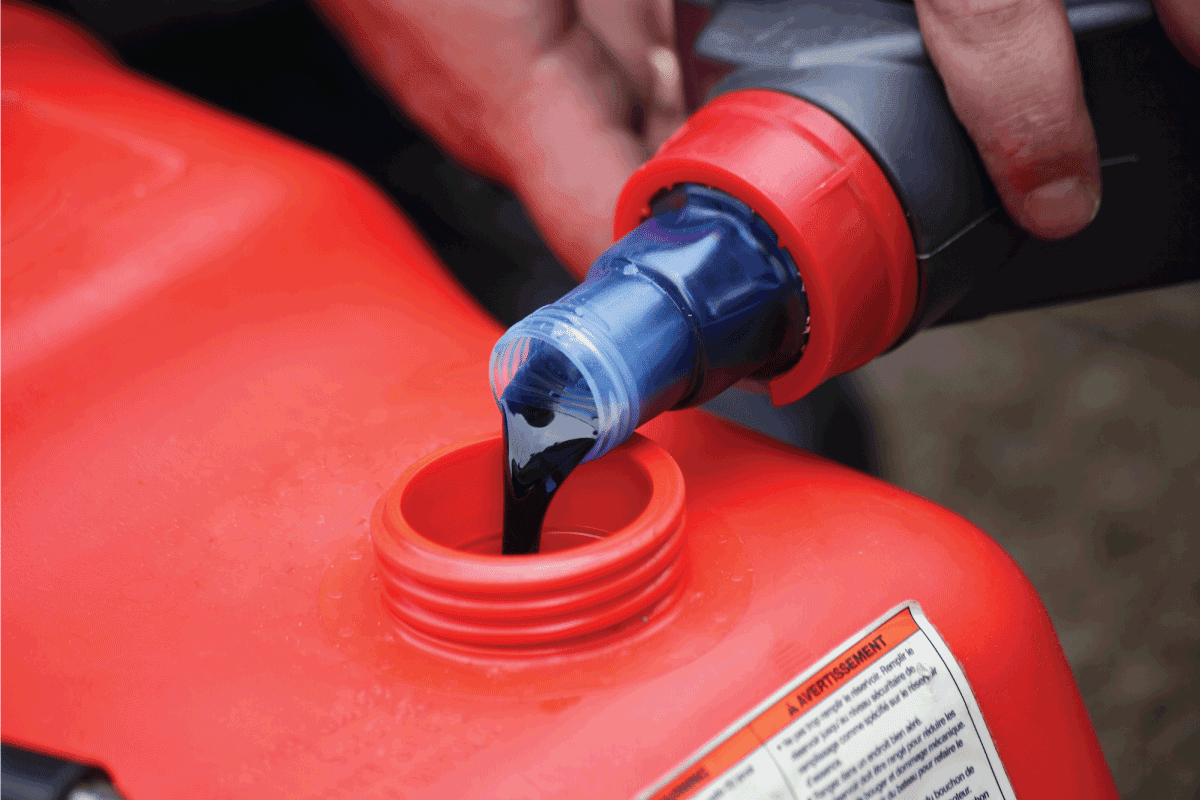Are you new to gardening and landscaping? You have a 2-stroke lawn mover. Wondering what’s the best oil to use? You are on the right page! We have done the leg work for your convenience. Here’s what the experts say.
For 2-stroke lawn mowers, SAE 30 is the best oil to use that is suited for warm climates. You can also choose SAE 5W-30 synthetic oil that works best for warm and cold climates.
Oil is a crucial element in operating any engine. But with so many types and brands on the market, you need to choose what is best suited to your 2-stroke engine. Stay on this page as we delve deeper into the nature of the 2-stroke engine, the factors considered in choosing the right oil, and other needed information.
Why Does Oil Matter for Lawn Mowers?
The lubricating and cooling capabilities of oil can never be understated. It is the crucial ingredient that gets your lawn mower running!
Oil is the lubricant that makes all the moving parts of the combustion engine run smoothly. With the correct oil, the engine parts can work at high speeds and even at extreme temperatures.
Without oil, the lawn mower engine endures friction and will overheat in a short time, thus hastening wear and tear. At worst, the machine incurs further damage, leading to a chain of waste of resources.

Factors To Consider In Choosing Engine Oil For Lawn Mower
There is a myriad of choices of engine oil available at the hardware, DIY shops, and other commercial establishments. You need to choose what meets your requirements.
However, lawn mowers do not use the same type of engine oil. Every user should understand the best oil to maximize the machine's performance. Here are the factors that affect the choice of engine oil:

Viscosity
Oil types vary in viscosity, that is, their thickness and consistency, as it freely flows under specific conditions.
The engine oil should have good film strength to reduce friction and also the ability to cling to dirt while operating the machine. Oil types that are too "thin" cannot properly lubricate the engine parts. Also, the dirt just repels since the oil lacks stickiness.
The right viscosity can extend the lifespan of the lawn mower. It affords the machine undue stress in the lubrication and cooling of engine parts. That said, this is the most important criterion in choosing engine oil.
Climate
A warm climate or high temperatures let the oil flow smoothly, while cold climates or low temperatures affect the oil's consistency. Oil may be in semifluid form when the temperature drops.
Operating Conditions
The engine oil contains additives designed to protect the lawn mower from the rugged operating conditions it is subjected to. This refers to the wet and muddy grass and rough terrain.
The lawn mower is considered a powerful tool in lawn care and maintenance; thus, its engine should work doubly hard to endure the rugged environment, notwithstanding the air temperature.
Engine Size
Lawn mowers come in 4-stroke and 2-stroke engines. The former has a big-sized engine compared to the latter. Each size calls for a specific oil type.
Frequency of Use of the Lawn Mower
Typically, the 4-stroke lawn mower is for commercial use. The 2-stroke lawn mower is for residential settings. The machine will remain idle for several weeks, be used in a dirty or dusty environment, then put back into storage. When not in use, the right oil keeps the engine ready for lengthy periods.

What Makes SAE30 and SAE 5W-30 the Best Oils for a 2-Stroke Lawn Mower?
Choose SAE 30 for your 2-stroke lawn mower due to the following reasons:
- Designed for small engines, the 2-stroke lawn mower falls in this category.
- Perfect for warm or hot climates with a wide temperature range of 40-100 Fahrenheit or 4-30 Celsius. Even if you live in colder regions, you won’t start mowing until the temperature is warm again.
- A simpler and adaptive oil type because the viscosity isn't easily altered due to the wide temperature range tolerance.
- It is economical and flexible. This is the same oil you use for other small lawn care equipment such as the chainsaw, water pump, and weed eater.
- This is endorsed by Briggs and Stratton, the industry's recognized and largest manufacturer of small engines.
SAE30 lawn mower oil is available on Amazon.
In a few instances that you need to mow in a cold climate or you are residing in a cooler than average climate, the SAE 5W-30 Synthetic Oil is the best because:
- The oil is thinner, so viscosity is acceptable even in extremely cold air.
- It gives continuous lubrication to the engine in cold weather.
SAE5W30 engine oil is available on Amazon.
Understanding the Engine Oil Code
Each type of engine oil you purchase displays a code with letters and numbers. Each code explains how well the oil performs in different weather conditions.
The Society of Automotive Engineers (SAE) is the proponent of the scaling of different oil types. The numbers translate to the flow of the oil or its viscosity. Low numbers flow best at low temperatures.
Multigrade oil, such as SAE 5W-30, is perfect for high and low temperatures. It contains two numbers, separated by “W,” which stands for "winter." The preceding number describes viscosity at low temperatures, while the number after W pertains to viscosity at high temperatures.
For example, a lower number after W, such as W20, isn’t a good choice because it is very thin and cannot properly lubricate. This can cause engine overheating in the lawn mower.
Why Choose Synthetic Oil?
The superior qualities of SAE 5W-30 Synthetic Oil make it the best bet for engine oil. It is artificially blended with chemical compound additives that make it slippery, thus minimizing friction. It also works well in extreme temperatures.
Synthetic oil is more refined to provide better performance for the lawn mower. The elements undergo rigid processes to remove impurities, thus creating a more consistent final product. The refining process of conventional oils is less intensive, producing more impurities that can hasten engine wear.
Using synthetic oils extends the serviceability life of the engine. It protects the engine from rigid wear and tear. The only drawback is that it is more expensive.
How about using motor oil for your lawn mower? Check out this post: "Can You Use Car Motor Oil In A Lawn Mower?"
The Nature of 2-Stroke Lawn Mowers
As previously mentioned, lawn mowers come in four-stroke or two-stroke engines. The former is bigger and for commercial uses. They burn gasoline and use motor-grade oil separately added to the engine's crank.
However, two-stroke engines burn gasoline and oil simultaneously. There is no separate lubrication system. This means that gasoline and oil are mixed before pouring into the engine tank. The mixture lubricates the engine as it passes through. The oil is burnt alongside the fuel.
It is this premixing of gas and oil that gives an advantage in using 2-stroke engines. You are relieved from the chores of checking and changing the engine oil before every mowing session.
How to Identify 2-Stroke Engines
You might wonder what engine you have for your lawn mower. A straightforward way to determine is to visually check the number and type of filling ports at the engine. The ports are where you pour in either the oil or gas.
For 2-stroke engines, there should be only one filling port for oil and gas. If you see two filling ports, then it is a 4-stroke engine that separates the oil and gas chambers.
This post is worth reading related to your lawn mower engine: "What Year Is My Briggs And Stratton Engine?"
Mixing Gas and Oil for 2-Stroke Engines
First and foremost, since gas and oil are mixed before pouring into the engine tank, you need to refer to the accompanying operator's manual to determine what specific ratio your machine requires. The mixing ratios are 32 or 50 parts to a gallon of gasoline.
A ratio of 32:1 translates to four US ounces of oil mixed with a gallon of gasoline. And similarly, for the 50:1 ratio, it is 2.6 US ounces of oil to a gallon of gasoline.

How to mix?
An empty gas can should come in handy. Here are the steps:
- Pour the required oil into the gas can.
- Head toward the gas station to fill in gas.
- You now have mixed gas.
- Shake the container to ensure thorough mixing before pouring it into the engine.
This gas can is a reliable, fuel-compliant container and easy to use. Operate it by pressing a button to control the flow while pouring, thus reducing overfilling and unnecessary spills. It has a translucent spout that lets you see the liquid as you pour. It also has a cap to prevent fumes from escaping, as well as a safety measure.
You can choose between 1, 2, 0r 5-gallon containers to purchase. This is a Briggs & Stratton design.
This gas can is available on Amazon.
There might be instances you've got fuel options at the gas station. Check out this post for a related topic: "Can You Mix Ethanol and Non-Ethanol Gas?"

Final Thoughts
Choosing the best oil for your lawn mower depends primarily on the viscosity, the climate, and the size of the engine. The 2-stroke lawn mower is a small engine, so SAE 30 is the best bet if you reside in warm regions. Use SAE 5W-30 if you are in colder regions.
With the correct oil, you will be able to maximize the optimum performance of your 2-stroke lawn mower. You will then enjoy your gardening and landscaping in the long term.
We hope you find this post interesting. If you wish to learn more about operating your lawn mower, we have these posts to provide more insights:



